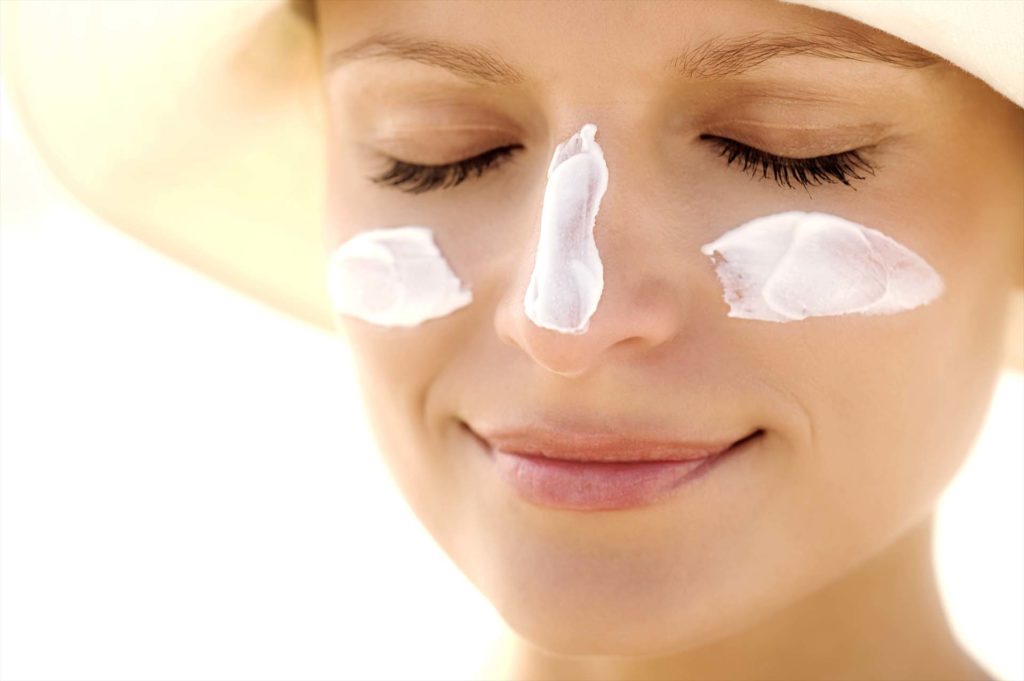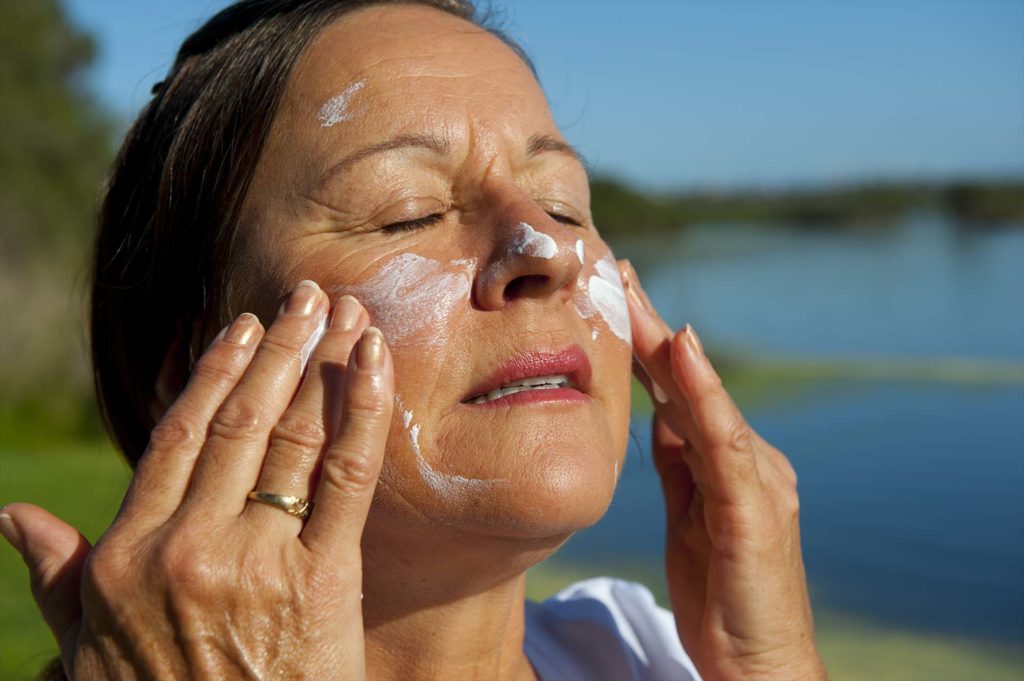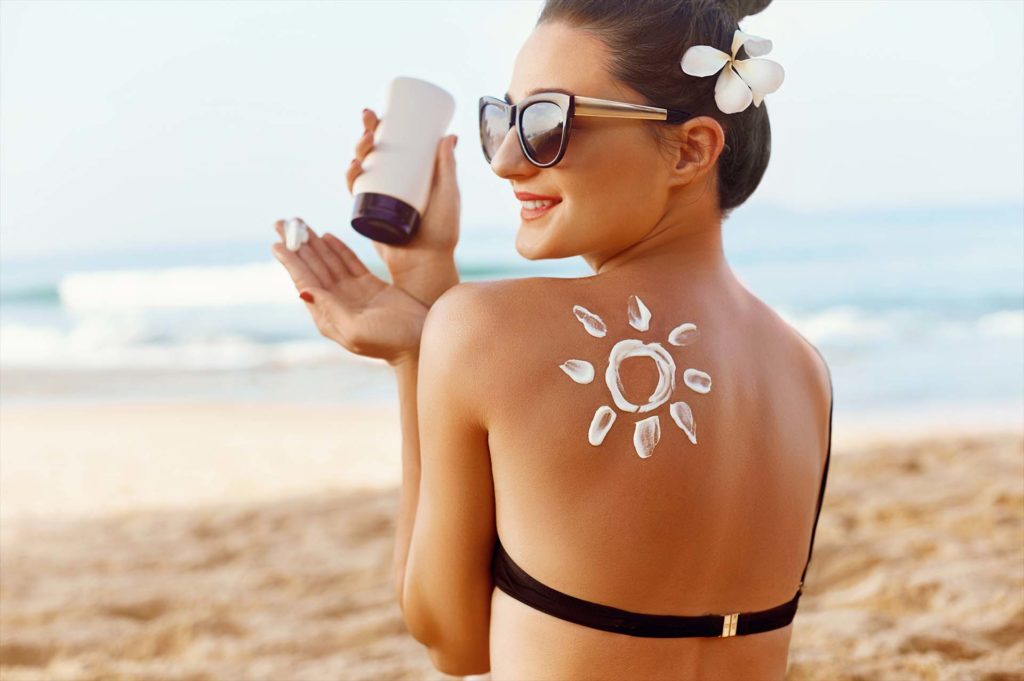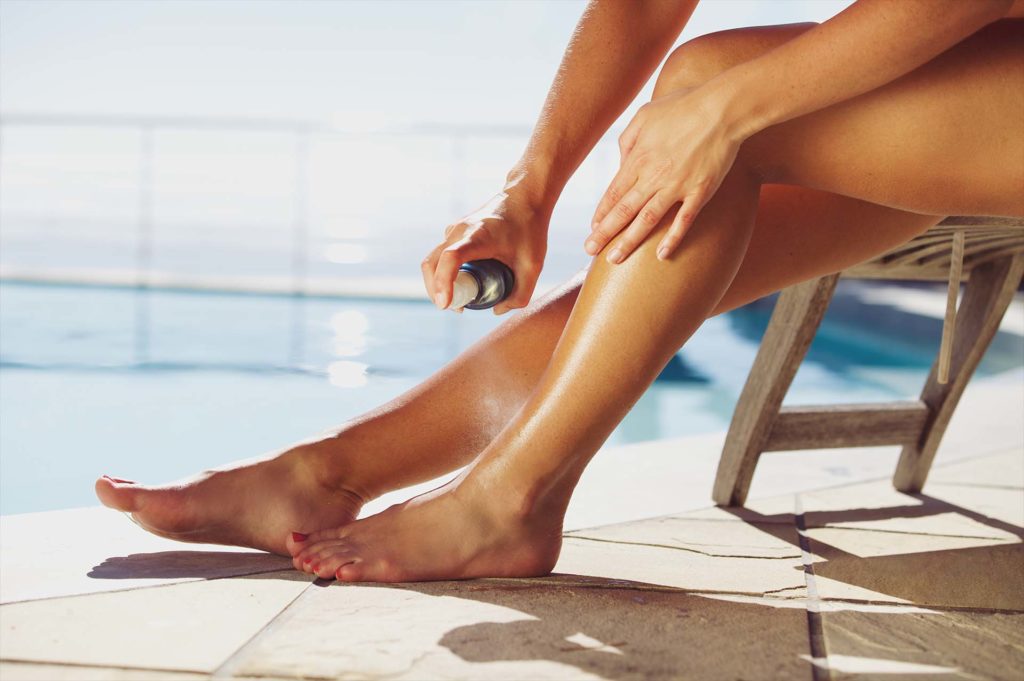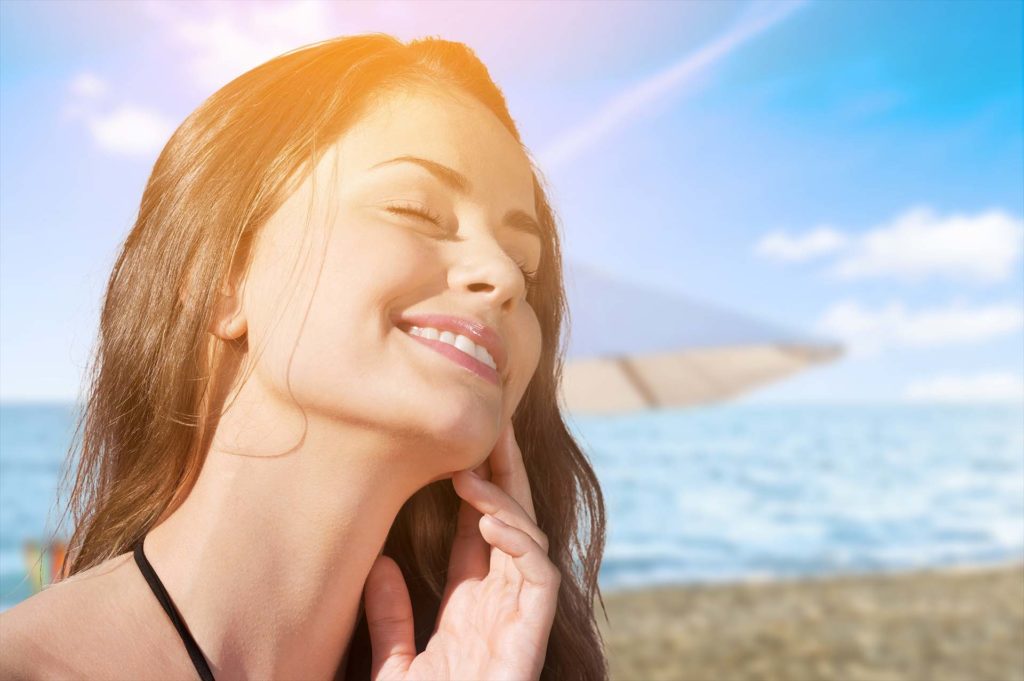10 Sun Protection Questions Answered
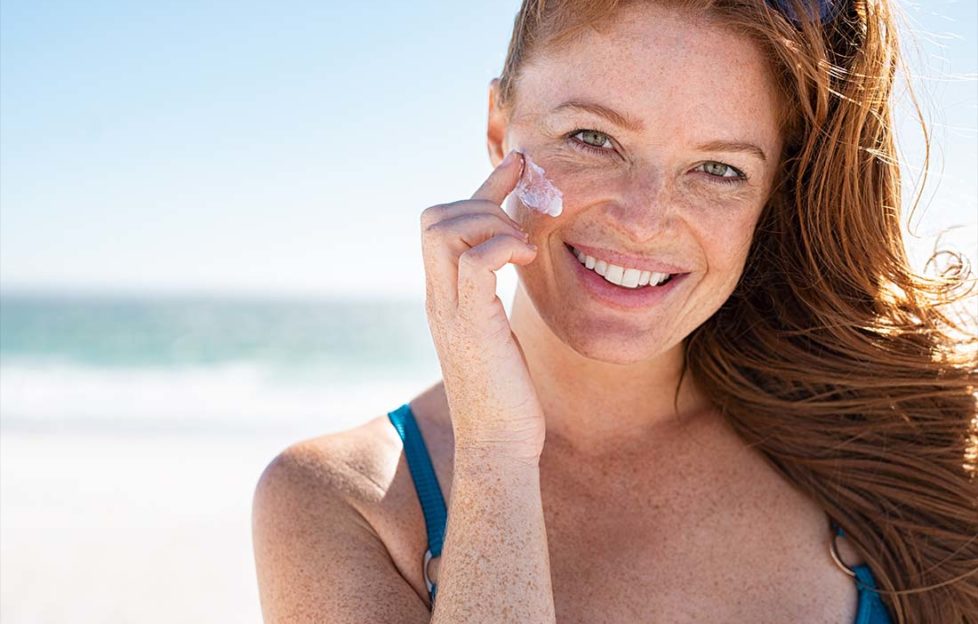
Even during lockdown, a daily SPF is essential to protect your skin from UVA rays that can cause premature ageing, as they can penetrate through glass. Dr Preema Vig has provided a sun guide to bust the sunscreen myths…
Q. Do you have to use sunscreen when it’s cloudy?
A. Cloudy days are no excuse not to wear sun protection as the level of UV radiation is not affected by temperature and UV rays can penetrate though thin cloud. In fact patchy clouds can intensify UV levels because radiation is reflected off the clouds edge and then focuses on the ground.
Q. What SPF should you use on your face?
A. Even if you decide to go for a lower SPF on your body you should always go for the highest possible protection on your face. “The SPF in your foundation isn’t enough to protect you in the sun so always use SPF50 sunscreen on your face” says Dr Preema Vig.
Q. What is the difference between UVB and UVA rays?
A. UVB rays cause burning and UVA rays are the ones that cause ageing and are associated with DNA damage. “UVA rays can alter the skin cell DNA, causing malignant melanoma over time” explains Dr Preema Vig.
Q. How important is wearing sunscreen in the battle against ageing?
A. The most important skin-care product available to prevent wrinkles is sunscreen. Both UVA and UVB rays cause wrinkles by breaking down collagen, creating free radicals and inhibiting the natural repair system of the skin.
Q. Do sunscreens protect against UVA and UVB rays equally?
A. The SPF on a bottle of sunscreen tells you the amount of protection from UVB rays and in the UK a star rating tells you proportionally how much UVA protection is in a sunscreen. Five stars means an SPF15 will offer the same level of UVB and UVA protection; whereas three stars (the EU standard) tells you that your SPF15 will give you a lower UVA protection than UVB. Also look for sunscreens that are labelled ‘broad spectrum’ as only sunscreens that protect against UVA and UBV rays are legally allowed to use this label.
Q. How often should you apply sunscreen?
A. Always apply a generous amount of sunscreen 20 minutes before sun exposure, so it can penetrate the skin and then reapply every two hours, especially if you’re in and out of the water.
Q. Which formulation offers more protection- spray, gel or cream?
A. All formulas will give you the same amount of protection. So if it says SPF15 on the bottle that’s what the protection will be. It’s really down to individual preference, so look at what the product does rather than what is is and ensure what you choose has a high SPF and UVA level of protection.
Q. If you go in the sun should you avoid using products with Retinol (Vitamin A) in?
A. You shouldn’t wear products with Retinol in the sun as it will make your skin susceptible to UV rays and actually cause skin to age faster. “Products with retinol will make skin light sensitive and will strip the skin of old skin cells, so you lose a bit of sun protection from the lifted dead skin cell barrier” warns Dr Preema Vig.
Q. What are the best ingredients to look for in a sunscreen?
A. Sunscreen ingredients can be divided into physical compounds that block radiation or non-physical compounds that absorb radiation. Look for scientifically advanced physical sunscreens like Titanium Dioxide and micronized Zinc Oxide, they provide broad-spectrum sun protection.
Q. What is the future of sun protection?
A. Cutting edge sunscreens no only protect against UVA and UBV rays, they also offer anti-ageing properties and reverse and repair DNA damage. In clinical studies the application of Extreme Protect SPF30 was proven to offer nearly complete protection against thymine dimmer formation. Thymine dimmers cause the specific DNA damage that is consistent with a high cancer risk.


